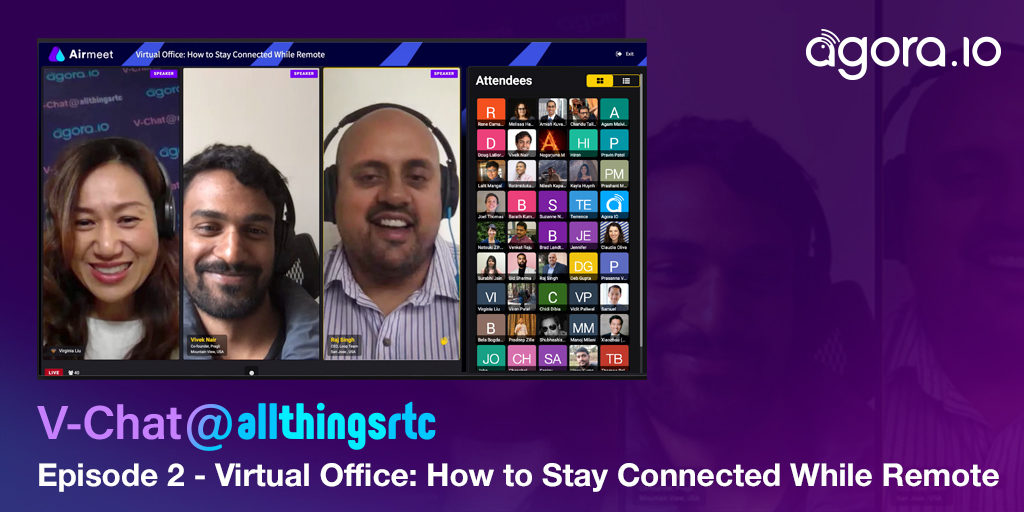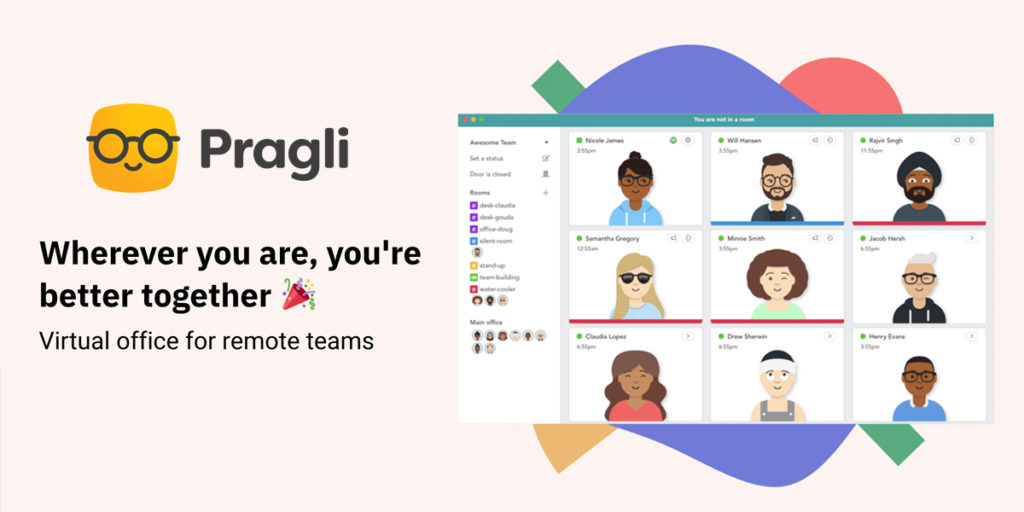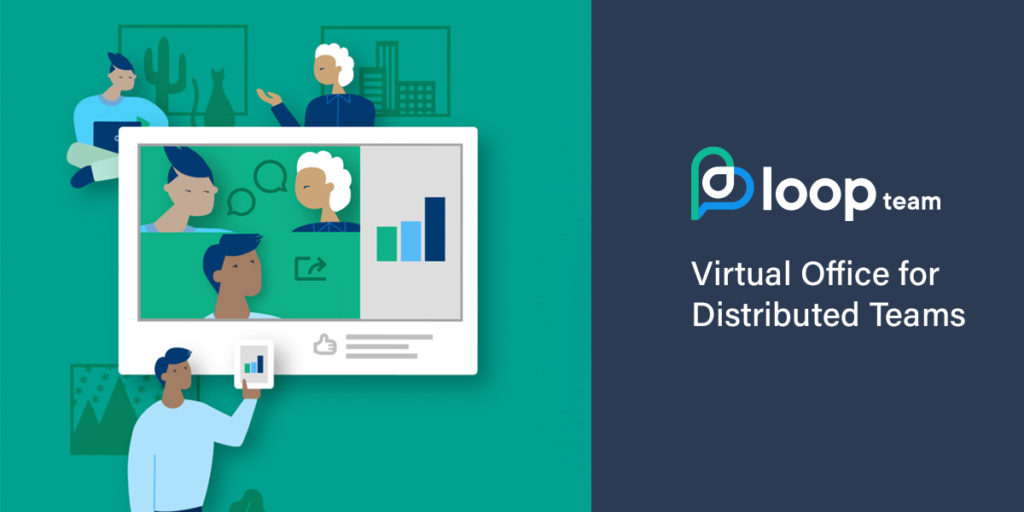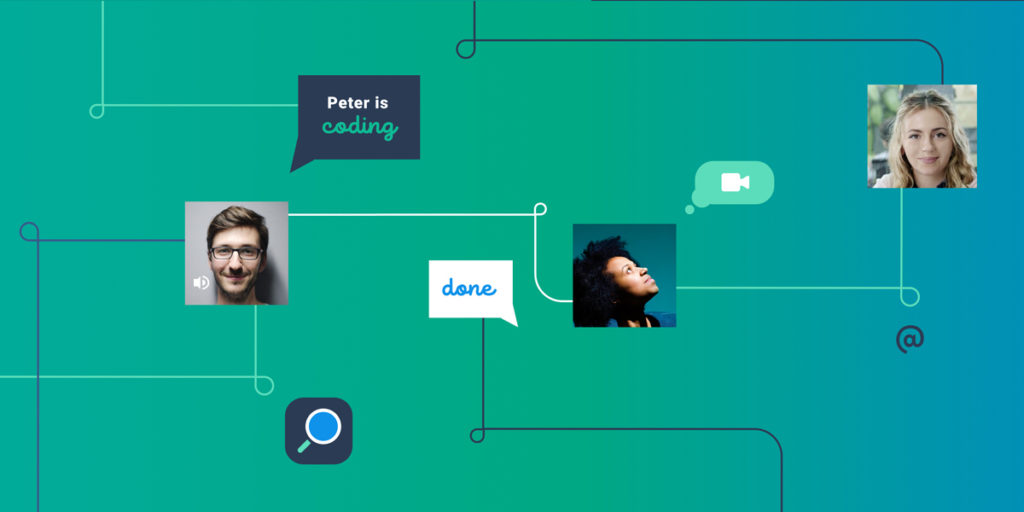
The Virtual Office: A New Generation of Tools
Even before COVID-19 forced everyone to work from home, companies across industries were shifting some employees to part- or full-time virtual offices. Tools like Slack and Zoom have facilitated this transition but they are awkward tools for team building and creative spontaneity, two advantages that teams have in the physical world.
In the second episode of our V-Chat@AllThingsRTC virtual fireside chat series, Agora’s Virginia Liu, SVP Marketing and Ecosystems, talks to Vivek Nair, co-founder of Pragli, and Raj Singh, CEO of Loop Team, about the challenges that face distributed teams and how their startups are innovating solutions that aim to replicate the advantages of physical coworking in a virtual environment. This is a lively and interesting discussion that outlines a completely new software space with incredible opportunities. Read a summary of the discussion below (quotes have been edited for brevity and clarity).
At Agora, we want to support visionaries like Vivek and Raj who have the foresight to seize opportunities in new spaces. If your projects also include streaming media, you can try out our SDKs by signing up for our Agora Self-Service Portal (SSP), which includes 10,000 free minutes/month and access to our low-code and no-code APIs.
Challenges of the Virtual Office
For many, the virtual office facilitates a better work/life balance (less commute time, flexibility to handle personal appointments, etc), but there are downsides. As Vivek notes, “There are two principle issues with remote work: loneliness and communication.”
Having worked for 9 years on distributed teams, Raj would hear colleagues lament, “I still need to fly to the main office for one week out of every month because I feel disconnected.” He explains, “When you’re physically in an office there’s more creative discussion and camaraderie that comes from the serendipitous nature of just bumping into people and listening in on things.”
When teams work remotely, even small issues, like knowing when teammates are available to talk, can be significant challenges.
Why Current Tools Fall Short
Video is a critical part of any communication solution because it allows people to see body language and helps to humanize the person on the other end better than email, instant messages and texts. But is it enough? Virginia asks Vivek and Raj to evaluate traditional conferencing solutions like Zoom and Microsoft Team.
Raj explains that these tools are calendar-driven and work well for formalized meetings but team building and creativity are really facilitated by ad-hoc discussions, which these tools are not designed to capture.
Vivek agrees, “Zoom is a presentation tool and there are so many different types of modalities of conversation that are not being captured correctly inside of Zoom and one of those is internal collaboration. How do you quickly grab someone for a chat? It’s way too formal to have to spin up Zoom in order to jump in and chat about something that shouldn’t really take that long.”
Likewise, even tools like Slack—designed to facilitate ad-hoc discussions—don’t hit the mark. Vivek describes the familiar scenario when, what could be, a quick 3-5 minute conversation takes 15-30 minutes on Slack as you wait for responses.
Another limitation of these tools: lack of presence. As Raj explains, “When you’re physically in an office, you kind of know who’s there. You’re not going to go call for someone you don’t see. But when you’re remote you actually don’t even know when your team is coming online. ”
Vivek agrees, “Your presence is now reduced to the green light folks see in Slack, but that’s a poor heuristic because it turns green if you’ve touched your phone or computer in the last 30 minutes.”
Tools for Human Connection
Raj and Vivek identify two requirements for new tools in this remote working space: (1) establishing reliable ways to determine presence without invading privacy and (2) facilitating ad-hoc discussions for team building and creative brainstorming.
To help establish presence and to facilitate ad-hoc discussions, Raj and Vivek admitted that they both experimented with always-on video, with predictable results. Vivek laughs, “Everyone hated it.”
Through various experiments at Pragli, Vivek explains, “We came to this realization that people really wanted these little configurable avatars in their product—a way that masks their privacy while also giving themselves a quirky sense of identity. We layered a bunch of other signals on top of that: Google Calendar, Slack information, to paint a more holistic picture about what people are doing.” He adds, “It turns out that a Calendar is quite good at determining whether people are available or not. Spotify is also quite a good signal as to whether somebody is available to chat. It might be, oh that engineer is focusing, I shouldn’t disturb them; but for management, if they’re listening to music they might just be hanging out between meetings. It gives you additional context about what is going on and allows people to make determinations for themselves.”

For Loop Team, Raj says establishing presence is largely about replicating In-Real-Life (IRL) experiences in a virtual space, “What we found was that it’s about recreating a lot of those IRL behaviors. So when you’re in a physical office, you shoulder tap if you want to quickly chat with someone. You can look at people’s body gestures and motions and movements and determine their moods. You can jump into conversations that may be happening behind you or on the other side of the room. Trying to recreate some of those IRL type behaviors is key in how we think about systems.”
As Raj and Vivek go on to discuss the question of team building and facilitating those ad-hoc discussions, Virginia wonders how the “watercooler” analogy fits into their implementations.
Raj says that Loop Team doesn’t think of the watercooler discussions as a specific room. Again, for them it’s all about creating those IRL experiences. “In a virtual sense, unfortunately, a lot of conversations are calendar-driven so it’s almost always work talk. What happened to all of the chitchat and the fun discussions and the random ideas? We are trying to foster and drive that and also allow other people to see the discussion so they can participate. The key is, at the end of the day, I want to feel more connected. For us it’s about creating that emotional sort of feeling—addressing the loneliness issue; what I miss when I’m physically in the office.”

Vivek says Pragli does have watercooler, trivia and other channels for teams to “engage in conversation that is outside the context of work.” They believe that by creating a space where people can talk, “creative sessions can happen.” They, too, have created features to encourage people to join ad hoc conversations. As Vivek explains, “We also have this idea of audio channels; you can see all the different conversations that are happening inside your team. What Slack is trying to do to email, with publicizing by default all the communications that’s happening inside of an organization, we’re trying to do for audio and video by publicizing by default all the media that are happening in the organization in a way that is fun and interactive.”
This new generation of tools goes beyond the utility of communications infrastructure and aims to solve the loneliness issue and to build team bonds.
The Business of a Happy Workforce
Virginia notes that, traditionally, management is more concerned with productivity over employee loneliness. She asks, “Can you make the connection between solving the emotional need and improving productivity?”
Vivek states, “There’s a tremendous amount more worker enablement and thought about the worker as this central person that actually matters in terms of making them productive and making sure that they’re happy and engaged at work.” Additionally, as it applies to creating places for the remote worker to engage in serendipitous conversations, he finds that, “Many managers don’t view that as a negative, they view it as ‘Oh awesome, we’re building team culture together, this is great.’”
Raj agrees and says that companies’ HR departments have become much more concerned with employee happiness and welfare. Now in the covid-19 shelter-in-place world, he says that companies are looking at whether workers are operating at the same levels of productivity and are actively exploring what tools can facilitate the work-from-home team’s productivity and happiness.
A Future Full of Opportunities
In closing, Virginia asks Vivek and Raj, “five to 10 years from now, what do you think the virtual office space will look like?”
Raj considers that this pandemic isn’t a true example of remote working because children are home, people can’t go to coffee shops or co-working spaces. However, he does consider this a disruptive event as it applies to the virtual office. He sees that “A large gamut of companies have no intention of going back to an office and that’s a fundamental shift. Ten years from now, there will be companies that will be primarily distributed or have a true remote-friendly culture. Offices are not going to go away but corporate offices may become more like co-working spaces where people are more fluid and come in a more transient way.”

Vivek agrees and says that there will be a shift to a hybrid office, if not to a fully distributed one. Additionally he predicts that there will continue to be huge demand for tools that support team communications and team building in the virtual world. He says, “Zoom is not working for a lot of situations. The idea of video conferencing as this modality of communication just doesn’t work for all cases. In order to fill that gap—that internal video/audio collaboration serendipitous conversation—things are going to evolve. What I predict is that people are going to have a lot of different preferences for how they want to communicate so there will be a lot of tools out there that satisfy that. I think it could be massive. I think it will be a very big space.”
In summary, Virginia states, “This is an exciting time for the virtual office, literally a new category of software that’s being created.” We are eager to see all the new innovative tools and platforms coming from this space.
Watch the full engaging and thought-provoking discussion between Virginia, Vivek and Raj here.

